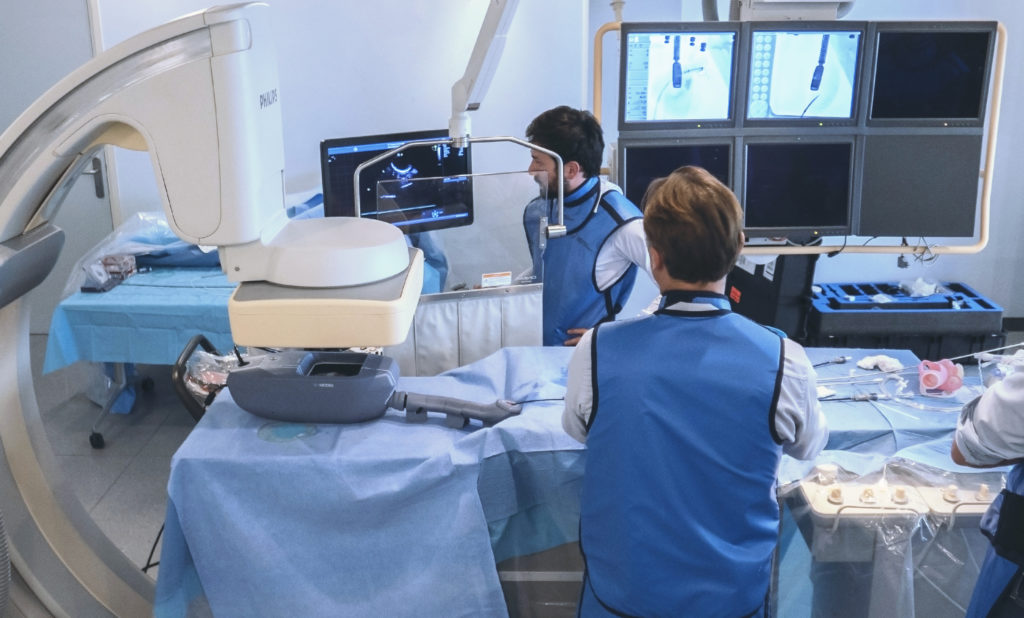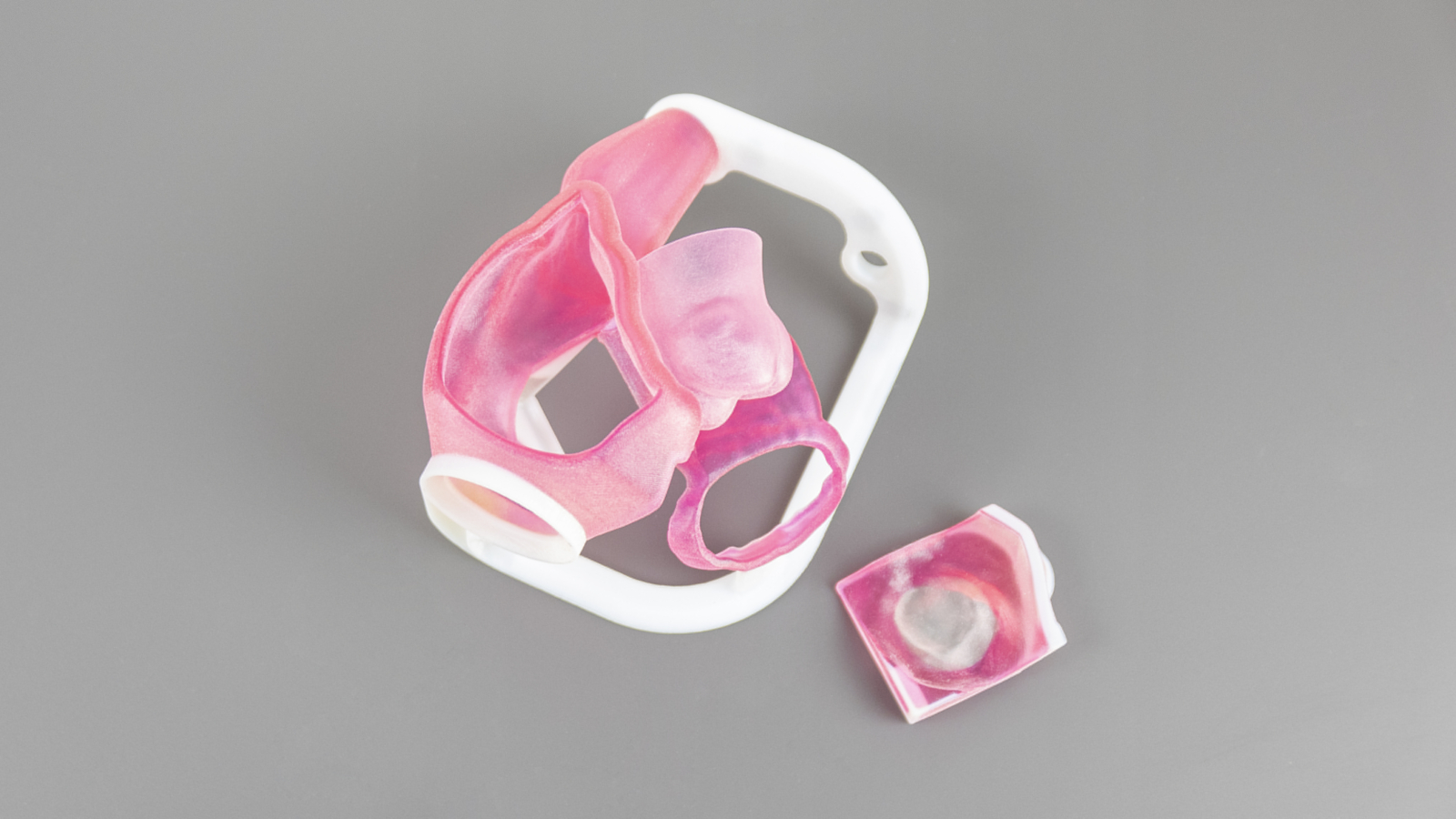Biomodex, a provider of 3D printed anatomical models for medical training purposes, has launched a new 3D printed training system for the transseptal puncture procedure.
By emulating the feel, geometry, and haptic feedback of real heart tissue, the model enables electrophysiologists and cardiologists to practice in a more realistic environment, and is even ultrasound-compatible. As such, the model can be used in ultrasound-guided practice runs, just like the real thing would be.
Dr. Juan Granada, President of the Cardiovascular Research Foundation, states, “Adoption of emerging structural heart technologies require the operators to receive more specialized training to further industry adoption. Biomodex’s latest solution offers an innovative alternative over traditional training methods because it enables physicians to gain experience by working on humanized models and using clinically adopted imaging tools in a real cath-lab environment.”

The transseptal puncture procedure
Of the four chambers of the heart, the left atrium is considered the most difficult to access through the skin. While it can be accessed through the left ventricle, the invading catheter is required to make two 180° turns, which is cumbersome for even the most seasoned of medical professionals. This is where the transseptal puncture (TP) comes in, as it provides a direct route to the left atrium through the intra-atrial septum, which separates the left from the right atrium.
As ingenious as the technique is, it comes with some inherent risks of injury, particularly to nearby heart tissues and valves. To alleviate some of this risk, the procedure is usually ultrasound-guided, giving doctors a clear visual of the position of the catheter. Regardless, the procedure requires an immense amount of skill and experience for patient safety, driving the need for realistic training devices.
Bill Perusek, VP of U.S. Sales for Biomodex, adds, “The volume of TP procedures has been on the rise due to increasing incidences of atrial fibrillation and other structural heart disease, which in turn has propelled the development of new devices and innovative treatment approaches. Our aim is to provide a modern and realistic training solution that can shorten the learning curve for this demanding procedure, and enable more physicians to advance their skills more quickly.”

3D printing a heart model
Manufacturing on Demand
The TP model comprises two main sections – a reusable frame modeling the vena cava, right atrium, and aorta, and a single-use replaceable septum cartridge, whereby the septum receives a piercing every practice run.
Biomodex 3D prints the multi-polymer anatomical twin using its own proprietary printing processes, which are called INVIVOTECH and ECHOTECH. The former is designed to mimic the mechanical behaviour of cardiac tissue and its surrounding blood vessels, enabling the integration of ‘real feel’ biomechanics. The latter, on the other hand, models the acoustic properties of human tissue, which allows for the visualization of the 3D printed models under ultrasound scanners.
Granada concludes, “Due to the fact the training models are 3D printed, we can adapt training to address more complex anatomies or specific technical challenges.”

The 3D printing of medical models for educational applications is long-heralded as one of the technology’s more classical use cases. Just last month, 3D printer OEM Stratasys provided a software update for its J750 Digital Anatomy 3D printer to better replicate porous bone structures, fibrotic tissue, and ligaments. Much like Biomodex’s technology, the system was originally designed to mimic soft cardiology tissues such as hearts and blood vessels.
Taking a more virtual approach, medical VR specialist Realize Medical recently announced a partnership with peripheral manufacturer Logitech to kit out its Elucis VR platform with interactivity. Together, the partners are working to integrate Logitech’s VR Ink Pilot Edition stylus into Elucis, allowing users to precisely draw and edit 3D medical models directly in a virtual space, with further options to print the models if need be.
* This article is reprinted from 3D Printing Industry. If you are involved in infringement, please contact us to delete it.
Author: Kubi Sertoglu


Leave A Comment